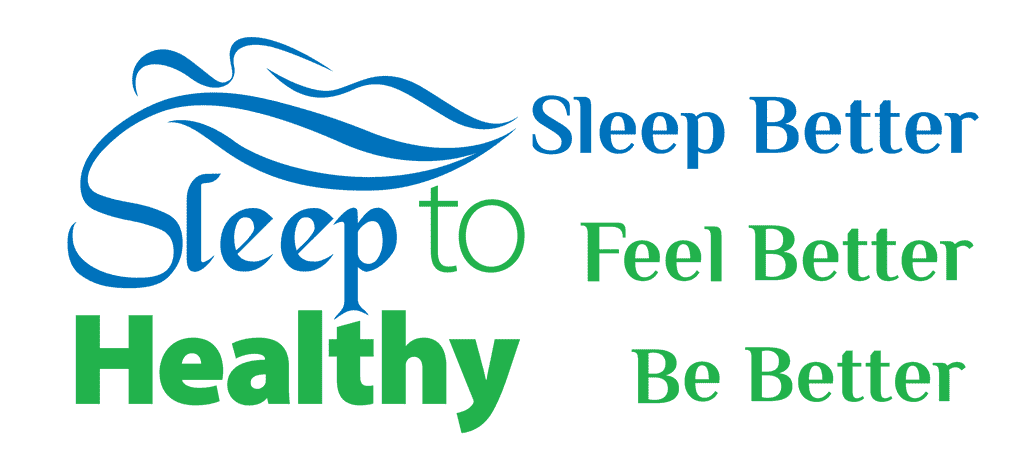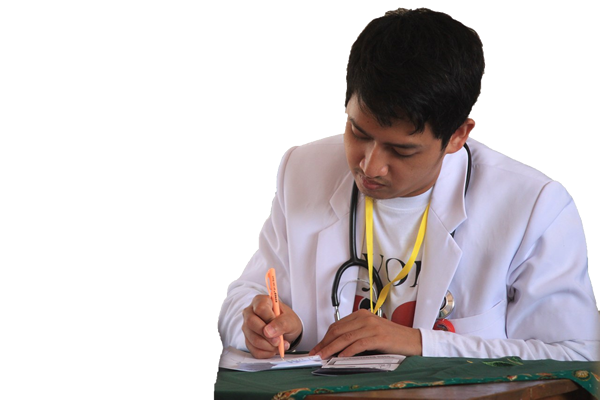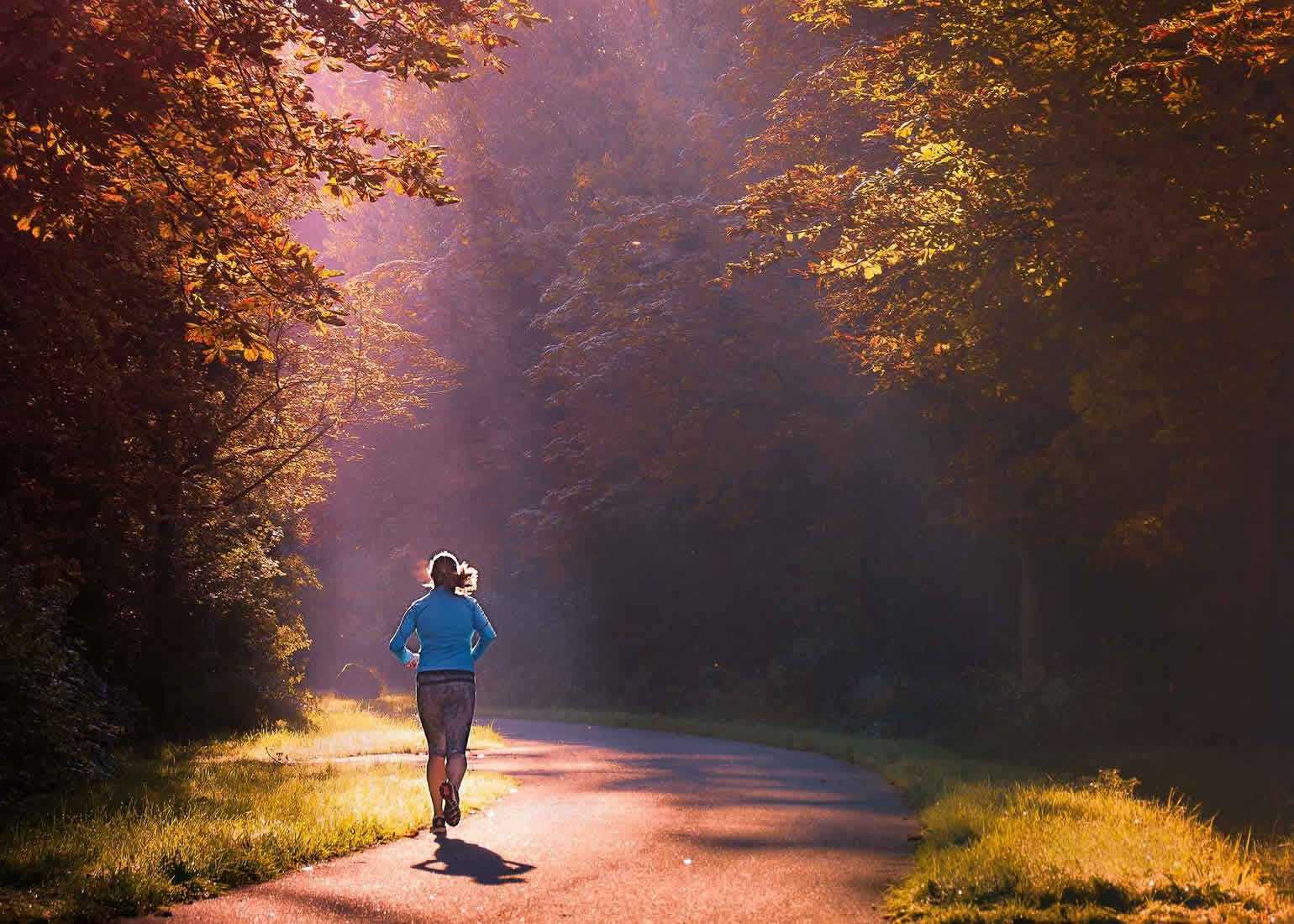
CBTi (Cognitive Behavioral Therapy for Insomnia):
CBTi or Cognitive Behavioral Therapy for Insomnia, is well recognized by sleep professionals as a highly effective way to tackle insomnia.
For instance:
- The National Institute of Health expert panel on insomnia released a Consensus Statement recognizing CBTi as the first-line treatment for insomnia.
- The British Association of Psycho-pharmacology has issued a statement recommending CBTi as a front-line treatment for insomnia.
- The American Academy of Sleep Medicine did two systematic reviews looking at a total of 85 clinical trials. Both reviews concluded that CBTi leads to significant improvements in getting to sleep and staying asleep.
CBTi is drug free but can be used alongside sleep medications.
But what is CBTi? CBTi improves sleep thoughts and behaviors. People with insomnia often take actions which are counter productive. This leads to wrong actions and added sleep stress. That’s why insomnia can persist for months and years, even after the initial cause of insomnia is long gone. CBTi corrects the mistakes most people with insomnia make thus ending the viscious insomnia cycle.
Before undertaking CBTi (or Cognitive Behavioural Therapy for Insomnia), you should first identify and resolve, to the degree possible, any underlying causes of insomnia such as sleep apnea, insomnia causing drugs, pain and so on. A more complete list is given in Lesson 3 including a CBT worksheet. Then this course can work like a CBTi coach online.
This CBTi Course:
This website, combined with the audio lessons, tell what is CBTi and provide a complete self directed, self learned course on CBTi. It is like having a CBTi coach online.
It covers the 5 elements of CBTi and gives suggestions on how you can implement CBTi to cure your insomnia including CBT worksheets.
Benefits of Better Sleep:
Sleep is primarily a function of the brain. So the benefits of good sleep acrue mainly to your brain’s functioning.
- Feel better
- Function better mentally
- Improved emotional control
- Better mental health & sense of well being
- Improve decision making & problem solving
- Smoother relationships
Many, if not all, of the negative health outcomes from insomnia reported in the media, such as heart disease, higher mortality rates etc., are plain wrong. I tell you why in the podcast. it will be like having a CBTi coach online and explain what is CBTi.
Sleep: Terms & Concepts:
Use this tool to find definitions of technical terms or jargon or complete the cbt worksheet.
A:
- Acceptance and Commitment Therapy (ACT) for Insomnia: ACT is an intervention that uses acceptance and mindfulness mixed with commitment and behavior-change strategies. https://contextualscience.org/acceptance_and_commitment_therapy_for_insomnia_act
- ACT-I: See Acceptance and Commitment Therapy (ACT) for Insomnia
- Advanced sleep phase syndrome (ASPS): A condition where patients go to bed early in the evening and wake up early in the morning. https://en.wikipedia.org/wiki/Advanced_sleep_phase_disorder
- Amitriptyline: An anti-depressant
- Apnea: See Sleep apnea
- ASPS – see Advanced sleep phase syndrome
B:
- Benzodiazepines: A class of drugs with a wide range of action including treatment of anxiety and treatment of sleep problems such as insomnia.
- Blue light: Light in the blue spectrum are believed to trigger the circadian rhythm. If experienced before bedtime, this can have a disruptive effect on sleep (unless you are purposefully delaying sleep). If used in the morning, it can help set the circadian rhythm.
- Body clock: see Circadian rhythm
- Bruxism: Excessive teeth grinding or clenching. https://en.wikipedia.org/wiki/Bruxism
C:
- Cataplexy: A sudden and transient episode of muscle weakness accompanied by full conscious awareness, typically triggered by emotions such as laughing, crying, or terror.
- CBD: Cannabidiol, a bioactive chemical found in hemp and medicinal marijuana. https://www.projectcbd.org/sleep-disorders
- CBT-I: See Cognitive behavioral therapy for insomnia
- Chronotypes: Genetically determined times we naturally sleep and wake. Some categories: Owls & Larks, Morning people & Night people.
- Circadian rhythm: Any biological process that displays a cycle of about 24 hours. In the case of sleep, the circadian rhythm is set by exposure to bright light. https://en.wikipedia.org/wiki/Circadian_rhythm
- Cognitive behavioral therapy for insomnia: CBT-I aims to improve sleep habits and behaviors by identifying and changing the thoughts and the behaviors that affect the ability of a person to sleep or sleep well. https://en.wikipedia.org/wiki/Cognitive_behavioral_therapy_for_insomnia
- Continuous positive airway pressure (CPAP): A form of positive airway pressure ventilator, which applies mild air pressure on a continuous basis to keep the airways continuously open in people who are not able to breathe spontaneously on their own. Used to treat sleep apnea. https://en.wikipedia.org/wiki/Continuous_positive_airway_pressure
- Cortisol: The body’s main stress hormone produced by the adrenal glands to control mood, motivation and fear including the body’s fight-or-flight response. https://www.webmd.com/a-to-z-guides/what-is-cortisol#1
- CPAP: See Continuous positive airway pressure:
D:
- Delayed sleep phase syndrome (DPSP): A sleep disorder that occurs when a person’s circadian rhythm (sleep/wake cycle) is delayed from the typical day/night cycle. People with delayed sleep phase have a natural tendency to go to bed later and wake up later than what is typically considered normal. https://www.sleepassociation.org/sleep-disorders/more-sleep-disorders/delayed-sleep-phase-syndrome/
- Delta waves: The slowest recorded brain waves in human beings observed with an EEG. As we age, we tend to produce less delta even during deep sleep. They are associated with the deepest levels of relaxation and restorative, healing sleep.
- DPSP: See Delayed sleep phase syndrome
- Dream: A succession of images, ideas, emotions, and sensations that usually occur involuntarily in the mind during REM sleep.
E:
- Eight hour myth: The myth that we all need 8 hours sleep. 8 hours is an average, so 50% of people need less than 8 hours of sleep a nighht. Individual needs, which are genetically determined and cannot be altered, varies between 6 and 10 hours for most people.
F:
- First night effect: When going to a sleep clinic, the effect of the environment and polysomnographic recording apparatus on the quality of the subject’s sleep the first night of recording. Sleep is usually of reduced quality compared to that which would be expected in the subject’s usual sleeping environment, without electrodes and other recording procedure stimuli.
G:
- Ghrelin: A hormone that stimulates appetite, fat production and body growth. Higher levels of ghrelin are associated with increased food intake and body weight. With insufficient sleep, our ghrelin levels rise.
- Glycogen: A sugar used in the human body as a form of energy storage.
- Growth hormone: Stimulates muscle growth and repair and helps athletes recover after workouts. Growth hormone is released during slow wave sleep.
- Guided imagery: Guided imagery is a relaxation technique where one’s thoughts are purposely redirected through imagination and visualization to achieve a desired goal. An example is counting sleep or imagining a safe and comfortable place like a warm, sunny beach.
H:
- Horne and Ostberg morningness and eveningness questionnaire: Helps to determine you chronotype: Whether you are an Owl (~25% of the population), a Lark (~25%) or something in between. https://en.wikipedia.org/wiki/Morningness–eveningness_questionnaire
- Hypnagogic events: The experience of the transitional state from wakefulness to sleep: Mental phenomena that may occur during this “threshold consciousness” phase include lucid thought, lucid dreaming, hallucinations, and sleep paralysis.
I:
- Insomnia: : A sleep disorder where people have trouble sleeping usually 3 night or more per week over a period of 3 months or longer (DSM-5). They may have difficulty falling asleep, or staying asleep as long as desired. https://en.wikipedia.org/wiki/Insomnia
J:
- Jet lag: Alterations to the body’s circadian rhythms caused by rapid long-distance trans-meridian (east–west or west–east) travel.
L:
- Lark: A chronotype. A morning person, someone who’s biological clock orients them to go to bed early and wake early.
- Leptin: A hormone that helps to regulate food intake and signals to the body when it has had enough food. Sleep deficiency results in lower levels of leptin which causes us to eat more that we normally would.
- Light therapy: Exposure to a bright light or daylight for a prescribed amount of time and, in some cases, at a specific time of day. https://en.wikipedia.org/wiki/Light_therapy
M:
- Melatonin: A hormone that regulates sleep-wake cycles produced by the pineal gland. Melatonin is involved in synchronizing the circadian rhythms including sleep-wake timing, blood pressure regulation. https://en.wikipedia.org/wiki/Melatonin
- Mindfulness: The psychological process of bringing one’s attention to experiences occurring in the present moment.
N:
- N1, N2, N3 sleep: See Sleep stages
- Nap pod: Special chairs, often used in corporate/workplace environments and universities, that allow people to nap.
- Narcolepsy: Long-term neurological disorder that involves a decreased ability to regulate sleep-wake cycles. Symptoms include periods of excessive daytime sleepiness that usually last from seconds to minutes and may occur at any time. https://en.wikipedia.org/wiki/Narcolepsy
- Night terrors: (sleep terror) A sleep disorder, causing feelings of terror or dread, and typically occurs during the first hours of stage 3–4 non-rapid eye movement (NREM) sleep. Sleep terrors begin in children between the ages of 3 and 12, and usually stop during adolescence. In adults, they most commonly occur between the ages of 20 to 30. https://en.wikipedia.org/wiki/Night_terror
- Nocturia: Having to wake at night to urinate.
- Nocturnal sleep-related eating disorder (NSRED): Eating while asleep, often walking into the kitchen and preparing food without recollection. Similar to sleep walking.
- Non-REM sleep: All sleep stages excluding REM (Rapid Eye Movement) sleep. Includes stage 1 (falling asleep), stage 2 (light sleep) and stage 3 (deep, slow wave sleep (SWS)). https://www.webmd.com/sleep-disorders/guide/sleep-101
O:
- Obstructive sleep apnea: The most common type of sleep apnea and is caused by complete or partial obstructions of the upper airway. See Sleep Apnea https://en.wikipedia.org/wiki/Obstructive_sleep_apnea
- Orexin (hypocretin): A neuropeptide that regulates arousal, wakefulness, and appetite. The most common form of narcolepsy, in which the sufferer experiences brief losses of muscle tone (cataplexy), is caused by a lack of orexin in the brain due to destruction of the cells that produce it.
- Owl:
A chronotype. A night person, someone who’s biological clock orients them to go to bed late and wake late.
P:
- Parasomnias: Disruptive sleep disorders that can occur during arousals from REM sleep or partial arousals from non-REM sleep. Parasomnias include nightmares, night terrors, sleepwalking, confusional arousals, and many others. https://www.webmd.com/sleep-disorders/guide/parasomnias#1
- Periodic limb movement disorder (PLMD): Involuntarily limb movement during sleep with symptoms or problems related to the movement. The problem is often reported by the bed partner. https://en.wikipedia.org/wiki/Periodic_limb_movement_disorder
- Polyphasic napping: A practice based on division of sleep into several smaller blocks per day as opposed to sleeping in a single block. https://polyphasic.net/
- Polysomnography: A type of sleep study, a multi-parametric test used in the study of sleep and as a diagnostic tool in sleep medicine. The test result is called a polysomnogram (PSG). https://en.wikipedia.org/wiki/Polysomnography
- Post-lunch dip: A natural desire for sleep which occurs about 7 hours after waking regardless of whether lunch is consumed or not.
- Post-traumatic stress disorder (PTSD): A mental illness. It involves exposure to trauma involving death or the threat of death, serious injury, or sexual violence. https://cmha.ca/documents/post-traumatic-stress-disorder-ptsd
- Power nap: A 20-30 minute nap.
- Prefrontal cortex: The cerebral cortex which covers the front part of the frontal lobe This brain region has been implicated in planning complex cognitive behavior, personality expression, decision making, and moderating social behavior.
- PLMD: See Periodic limb movement disorder
- PTSD: See Post-traumatic stress disorder
R:
- Rapid eye movement: (see REM sleep)
- REM sleep: Rapid Eye Movement sleep, named because the eyes move rapidly during this sleep stage. Brain waves are similar to a wakeful state. Sometimes called paradoxical sleep because the brain is active and dreams yet the body is immobilized and cannot move. If you wake up during REM sleep you might experience sleep paralysis. REM sleep periods last longer as the night progresses. Normally associated with vibrant dreams. REM is when memory consolidation occurs, emotions are regulated and learning of complex tasks improves. It is especially important to early childhood development. Sexual arousal is normal in both sexes regardless of the nature of the dream.
- Restless Legs Syndrome (RLS): A disorder of the nervous system that causes an urge to move the legs. Because it usually interferes with sleep, it also is considered a sleep disorder, although the symptoms can be felt while awake. https://www.webmd.com/brain/restless-legs-syndrome/restless-legs-syndrome-rls#1
- RLS: See Restless Legs Syndrome
- Sedation: The administering of a sedative drug to produce a state of calm or sleep.
- Segmented sleep: The concept of having a long period of wakefulness during the night so that sleep occurs in two or more segments. https://www.webmd.com/sleep-disorders/features/what-is-segmented-sleep#1
- Semisomnia: A chronic state of low-grade exhaustion caused by too little or fitful sleep.
- Sexsomnia: A condition in which a person will engage in sexual activities while asleep. It falls within the broad class of sleep disorders known as parasomnias.
- Shift work: Working shifts outside normal daytime work hours. Includes both long-term night shifts and work schedules in which employees change or rotate shifts.
- Shift work disorder (SWSD): A circadian rhythm sleep disorder characterized by insomnia and excessive sleepiness affecting people whose work hours overlap with the typical sleep period.
- Sleep: Sleep is a naturally recurring state of mind and body, characterized by altered consciousness, relatively inhibited sensory activity, inhibition of nearly all voluntary muscles, and reduced interactions with surroundings. It is distinguished from wakefulness by a decreased ability to react to stimuli, but more reactive than coma or disorders of consciousness, sleep displaying very different and active brain patterns. https://en.wikipedia.org/wiki/Sleep
- Sleep apnea (apnoea): A sleep disorder with pauses in breathing or periods of shallow breathing during sleep. Each pause can last for a few seconds to a few minutes and they happen many times a night. See also Obstructive sleep apnea
- Sleep clinic: A medical lab where patients are monitored either overnight or during the day to observe how they sleep. Rooms are outfitted with appropriate medical monitoring equipment and run by staff trained in sleep medicine.
- Sleep cycles: See Stages of Sleep
- Sleep diary: A means to track your sleep. It can take a wide variety of forms depending on the purpose.
- Sleep duration: The total amount of time spent sleeping. Typically the time spent in bed minus: The time it took to fall asleep and the time awake during the night.
- Sleep efficiency: Sleep duration divided by the time spent in bed. So if sleep duration is 8 hours and time spent in bed is 10 hours, sleep efficiency is 0.8 or 80%.
- Sleep hygiene: Sleep hygiene is a variety of different practices and habits that are necessary to have good nighttime sleep quality and full daytime alertness. Some examples are: avoiding stimulants such as caffeine and nicotine close to bedtime, exercising, exposure to natural light during the day and limiting exposure to bright light close to bedtime and establishing a relaxing bedtime routine.
- Sleep inertia: A physiological state of impaired cognitive and sensory-motor performance that is present immediately after awakening. It persists during the transition of sleep to wakefulness, where an individual will experience feelings of drowsiness, disorientation and a decline in motor dexterity. Impairment from sleep inertia may take several hours to dissipate. In the majority of cases, morning sleep inertia is experienced for 15 to 30 minutes after waking. https://en.wikipedia.org/wiki/Sleep_inertia
- Sleep-maintenance insomnia: Difficulty staying asleep (as opposed to getting to sleep or waking prematurely).
- Sleep need: The sleep requirement of an individual. The normal range is 7 to 9 hours for adults, but can sometimes exceed this range. https://www.sleepfoundation.org/excessive-sleepiness/support/how-much-sleep-do-we-really-need
- Sleep-onset insomnia: Difficulty getting to sleep when first going to sleep for the night.
- Sleep paralysis: When, during awakening or falling asleep, a person is aware but unable to move or speak. During an episode, one may hallucinate (hear, feel, or see things that are not there). It often results in fear. Episodes generally last less than a couple of minutes. It may occur as a single episode or be recurrent. The condition may occur in those who are otherwise healthy, those with narcolepsy, or may run in families as a result of specific genetic changes.
- Sleep restriction therapy: A behavioral treatment for insomnia that decreases the time spent in bed and then slowly adjusting the time depending on the outcome. https://thrive.kaiserpermanente.org/care-near-you/northern-california/sanjose/wp-content/uploads/sites/7/2015/10/sleep-restriction-rev2_tcm28-557887.pdf
- Sleep talking (Somniloquy): Talking while sleeping but not being aware of it. Can involve complex dialogues or monologues, complete gibberish or mumbling.
- Sleep tracker: A device that tracks sleep. Can be a watch-like wearable or a stand alone device or an app on a smart phone.
- Sleep wearables: A sleep tracker worn on the wrist to monitor sleep.
- Sleep/wake homeostasis: Homeostasis is the ability to keep something within pre-set limits, such as the body maintaining a constant temperature. There are several mechanism that regulate sleep and wakefulness. Homeostasis is the balance between these forces that results in a feeling of either sleepiness or wakefulness.
- Sleepiness: The state of feeling sleepy and wanting to sleep or able to sleep if made comfortable and secure. Not tiredness which is the physical body or mind needing rest, but not the desire or ability to fall asleep easily.
- Sleeping position: Generally classified as back (laying on one’s back), side, stomach or fetal (which is on the side but curled up like a baby in the womb). Sleep positions change many times during sleep.
- Sleepwalking (Somnambulism): A state of combined sleep and wakefulness during slow wave sleep where the person performs activities normally not associated with sleep. It is classified as a sleep disorder. https://en.wikipedia.org/wiki/Sleepwalking
- Slow wave sleep (SWS): Deepest sleep, stage 3 of N-REM (non-rapid eye movement) sleep. Physical healing, restoration and growth, release of the growth hormone, learning and synaptic formation occur during this stage.
- Snoring: The vibration of respiratory structures and the resulting sound due to obstructed air movement during breathing while sleeping. Snoring during sleep may be a sign, or first alarm, of obstructive sleep apnea.
- Somnambulism: See Sleepwalking
- Somniloquy: See Sleep Talking
- Stages of sleep (N1, N2, N3, REM): Stages of sleep measured by an EEG. N1, N2 and N3 are all non-REM sleep (NREM). N1 is transitional, the drifting off to sleep. N2 follows N1 and lasts about 20 minutes. N3 is deep sleep or slow wave sleep (SWS) or delta wave sleep. It is the lowest brain activity stage and gives the feeling of having a restful night’s sleep. The amount of N3 sleep decreases as we age. REM, or Rapid Eye Movement sleep is when we dream, the eyes move rapidly, and the brain becomes active, but the body is immobilized and cannot move. If you wake up during REM sleep you might experience sleep paralysis.
- Stimulus Control Therapy: A set of instructions and techniques to break negative associations of the bed which interfere sleep.
- SWS (N3): See Slow wave sleep
T:
- Teeth grinding or clenching: See Bruxism:
- Theta Waves: EEG frequency range involved in daydreaming and sleep.
- Tiredness: The feeling of needing physical or mental rest or rejuvenation, but not sleep. (as opposed to sleepiness).
- Tryptophan: An amino acid that is reported to create a calming mood helpful for sleep.
V:
- Valerian: A herb that is reported to create a calming mood helpful for sleep.
Y:
- Yoga: A group of physical, mental and spiritual practices which originated in India.
Z:
“z” drugs: Zaleplon, Zolpidem, Zopiclone. Related to benzodiazepines but have a shorter duration and generally considered safer.


